By Sean Fagan
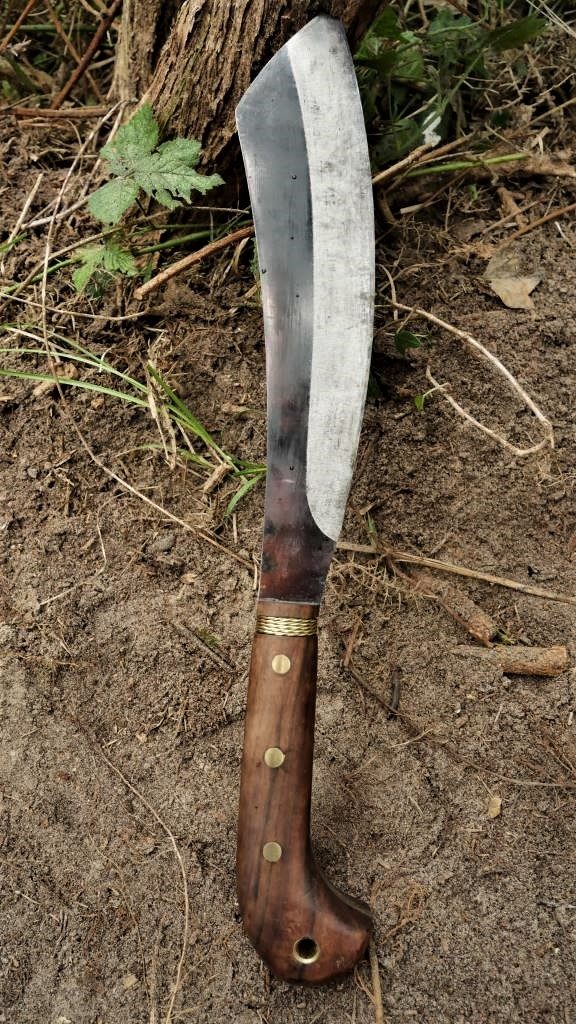
Budget options for bushcraft gear.
About 8 months ago I bought a mini-duku parang - which costs around 100 euros (many, good quality parangs cost in excess of 300 euros).
In case you don’t know what a parang is – I wrote a blog about parangs (which you can find here).
In short, Parangs are forward-curved, long-bladed tools that were traditionally used in jungle environments for such tasks as clearing away vegetation and shelter-building with natural materials.
Besides being exceptionally good for clearing away vegetation and shelter-building - parangs have a lot of other bushcraft applications. They are a truly versatile, woodland tool.
After months of use, I wanted to share my own experiences of using the mini-duku parang and to see if this parang is a good quality, budget-priced tool...
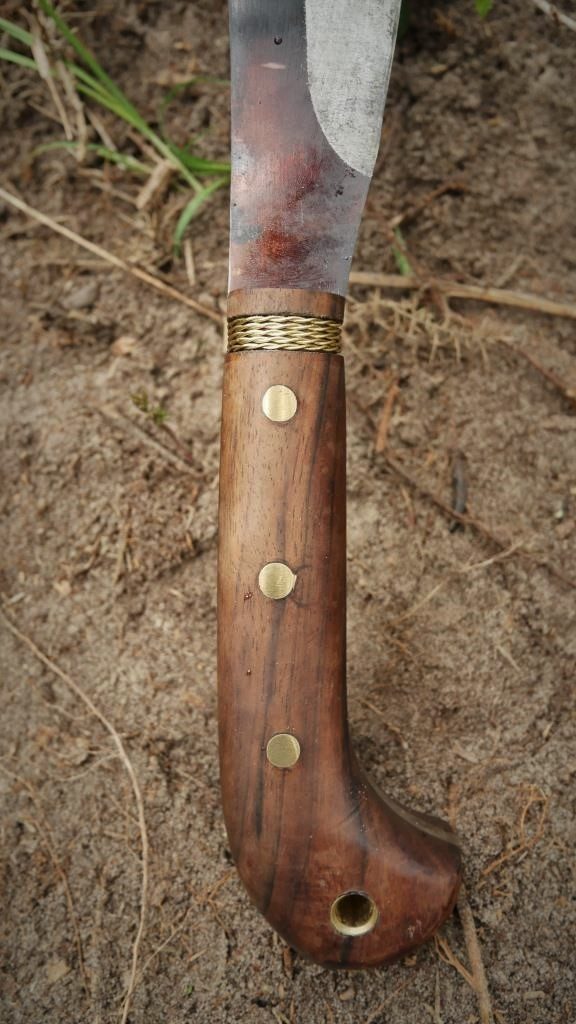
What I’ll be covering in this review can be summarised under the following headings:
- CHOPPING & SPLITTING WOOD
- SHRUB CLEARANCE
- CARVING
- SHARPENING & HOLDING A SHARP EDGE
- FIRE-STEEL USE
Basic description:
Weighing in at a modest 458gr (almost half a kilogram or 1lb) with an equally modest overall length of 42cm (16.5 inches) – the mini-duku is very portable. It can easily be carried in a medium-sized day-pack or packed away for multiple-day camping trips.
The parang comes with a sturdy, well-stitched leather sheath.
The handle is made from an attractively-grained hardwood that is fastened to the tang with brass rivets, and reinforced with brass wire near the blade/handle junction.
REVIEW OF THE MINI-DUKU PARANG
- CHOPPING & SPLITTING
One of the main functions of a parang is chopping and splitting wood. It needs to be able to efficiently chop and split both living and dead wood for a myriad of bushcraft tasks such splitting logs for a campfire, pointing stakes etc.
Despite it's relatively short size – the mini-duku carries a lot of heft and easily chops wood. One of the most important aspects of a chopping tool is balance – it’s also the hardest aspect of a chopping tool to explain.
After using the parang for a couple of months of heavy chopping – I was very impressed. The solidity of build and the good weight of the blade, along with the overall balanced feel of the parang makes it a great chopper & splitter of wood.
I've read reviews that the mini-duku handle can be uncomfortable when used for chopping. I did not have any issues with the handle - no hot spots or blisters after hours of chopping, quite the opposite - the handle felt great and reassuringly safe in my hand.
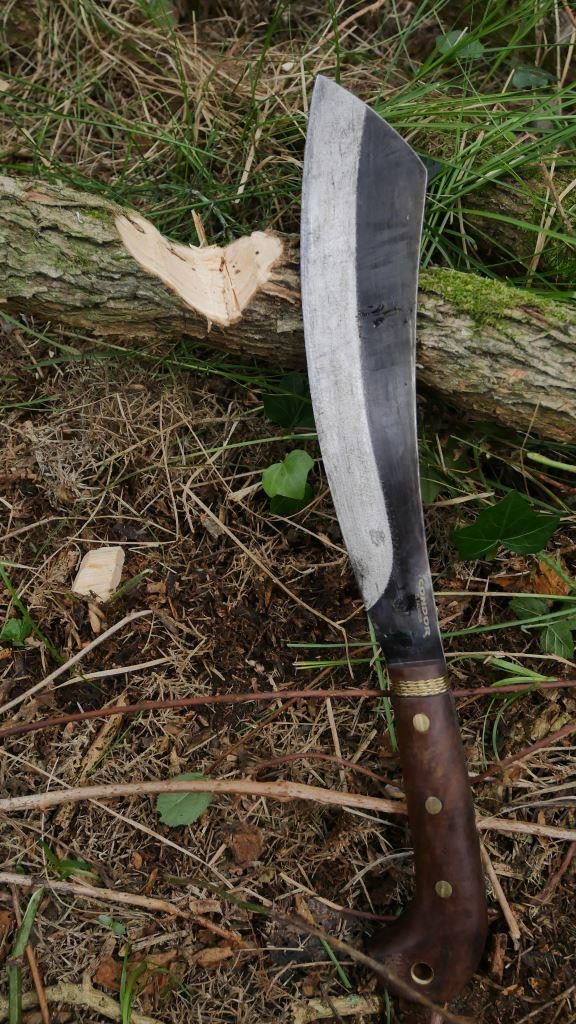
2. SHRUB CLEARANCE
The parang does well at this task. However, I had one issue - the length of the blade is on the short side - so clearing away vegetation requires having to reach down close to the ground (to slice through plant stems near their base). It's slightly awkward.
I've used longer bladed machetes and parangs before and having that extra reach makes the task of shrub clearance all the more efficient and less strenuous.
Bottom line, the mini duku does a fine job at shrub clearance, not great - but then again, there is no such thing as the perfect tool in bushcraft - all have their strengths and limitations.
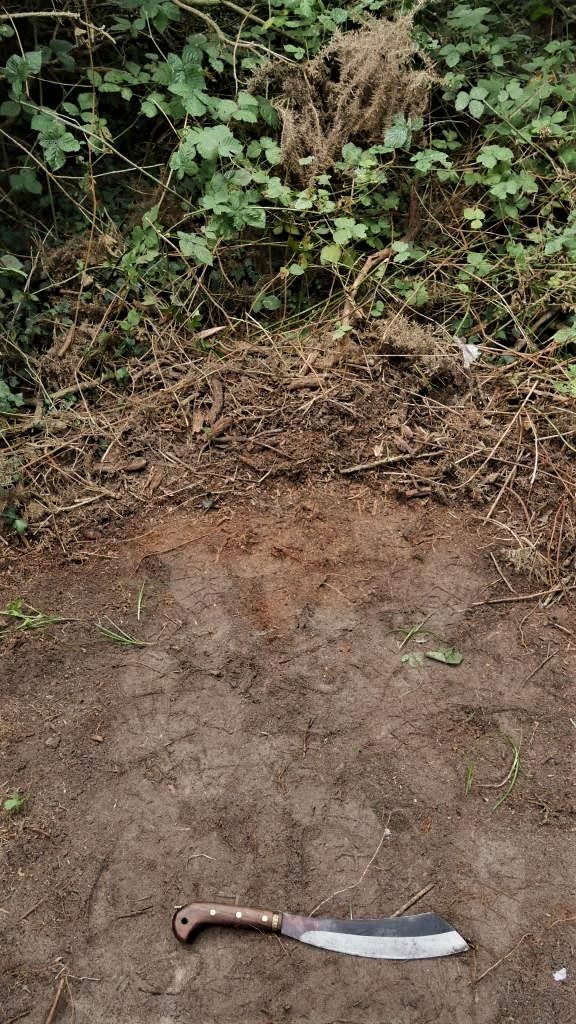
3. CARVING
The bulk of carving with a parang is done with the first 1-2 inches of the blade. This is where it's safest for controlled carving.
As you can imagine, carving near the tip of the long blade of a parang could be hazardous - because it's hard to control and prone to slipping - potentially causing cuts.
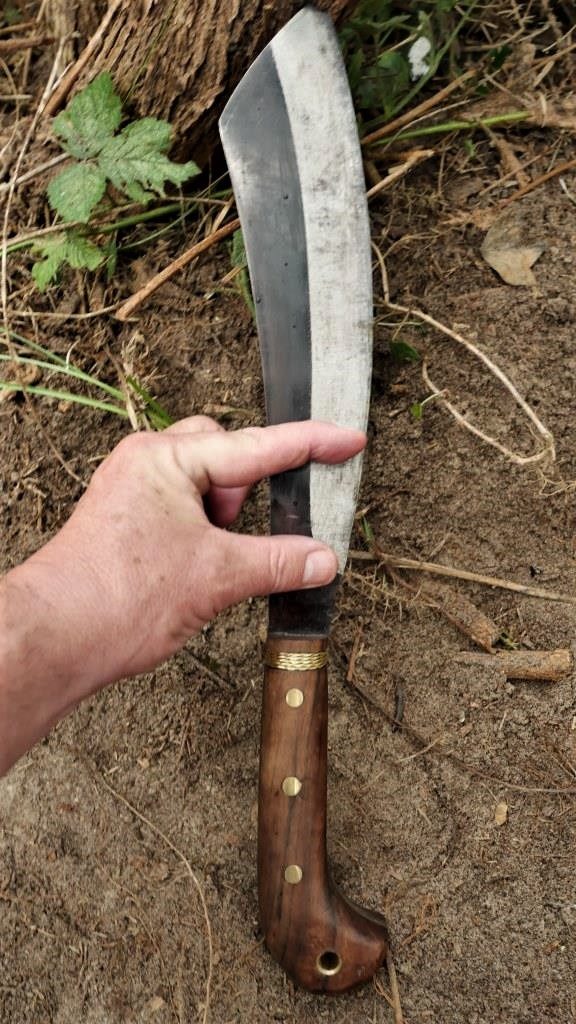
Let's be clear with the limitations of carving with a parang. Most fine carving bushcraft projects are done with a small knife, where the whole length of the blade, including the tip, can be safely used for carving. This is not a practical reality for a parang.
But where the parang excels in carving is making feather-sticks - and heavy carving. Still, parangs are very limited in their carving ability - but that's okay - they have many strong points.
I always make an extra effort with sharpening the first 2 inches of my parang blades - so its considerably sharper than the rest of the the blade.
After stating that - the tip of the parang, when sharp, can be used for fine tasks such as skinning wild animals or gutting fish for food preparation.
4. SHARPENING & HOLDING AN EDGE
The blade of the mini duku is high carbon steel. It's tough, doesn't chip easily, can be sharpened easily and just as importantly - holds a sharp edge well.
However, the biggest downfall with carbon steel is rust.
Carbon blades will readily rust if stored away damp. It's important to dry off high-carbon blades as soon as you've finished a task. With long term storage, I lightly coat the blade with oil - often using what's to hand...Vaseline-based lip balm, coconut oil etc.
I prefer to use a food-safe oils such as coconut or olive oil as its safer when using my parang for food preparation (such as carving meat or chopping vegetables).
5. FIRE-STEEL USE
One of the pillars of bushcraft fire-lighting is a fire-steel. Durable, damp-proof, long-lasting and versatile - the fire-steel is a great way to start a fire with sparks. However, it requires skill to use sparks as a fire source...as sparks are far less flammable than say, the flames of matches or lighters.
The best way to use a fire-steel and parang is to strike the fire-steel off the back edge of the parang blade - near the handle. This is where it's most stable for efficiently producing fire-steel sparks.
Thankfully, the carbon steel of the mini-duku is ideal for using with a fire-steel - and produces large, very hot sparks....ideal for starting a campfire.

OVERALL IMPRESSION
The mini-duku parang carries a lot of functionality for it's weight and size.
Personally, I love it.
The build quality, ease of use and the sheer versatility of this parang makes it a great bushcraft tool.
However, there is one major caveat - any long-bladed tool such as the min-duku requires excellent technique. The margin of error when using such a long, sharp tool in remote places is slim to none. To put this point in context - parangs are more hazardous to use than other sharp-edged, bushcraft tools - such as the axe and knife.
* I've included an excellent video on how to safely use a parang at the end of this web page - alternatively you can look at it here.
"I learned how much of what we think to be necessary is superfluous; I learned how few things are essential, and how essential those things really are"
Bernard Ferguson, Chindits, Burma 1943.
Related articles on this website:
You can buy the Mini Duku here (on Amazon.com)
Finally, an excellent video by Ben Orford, on how to safely use a parang:

Recent Comments